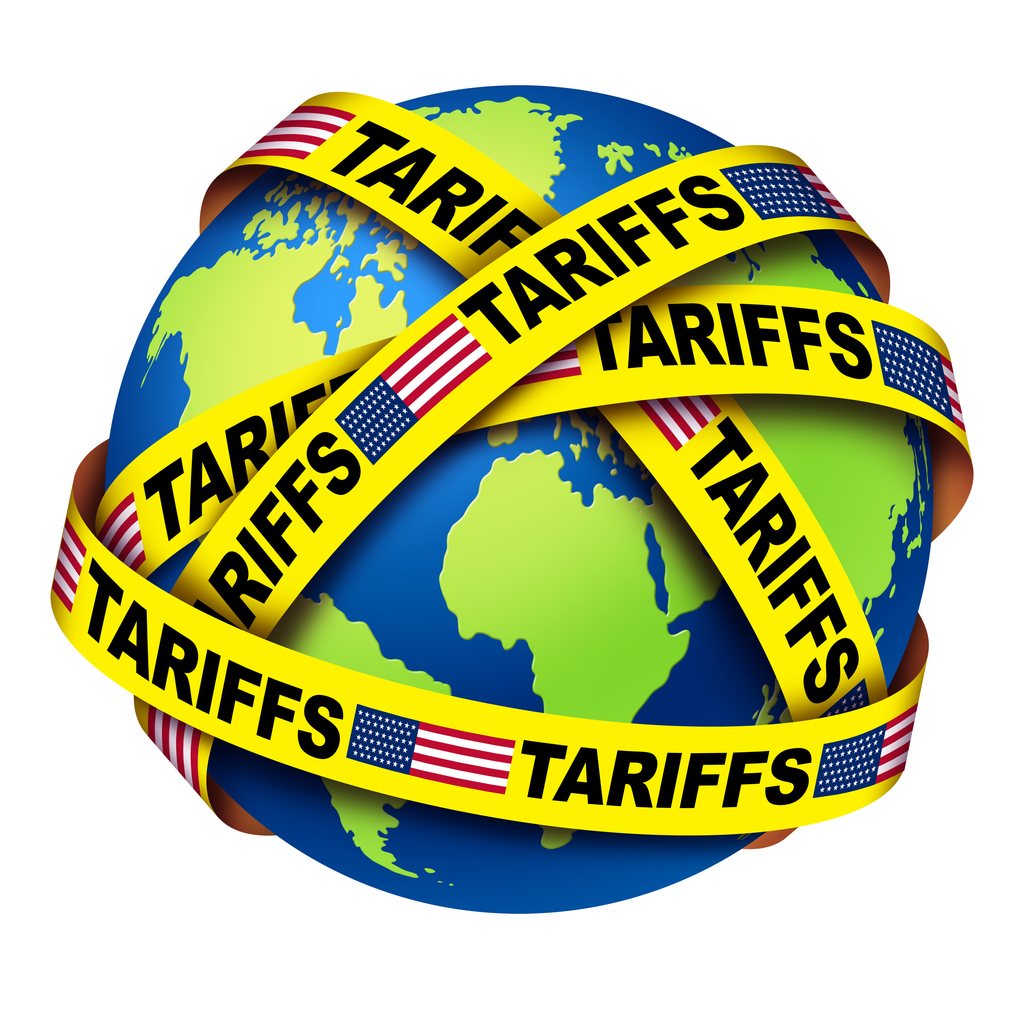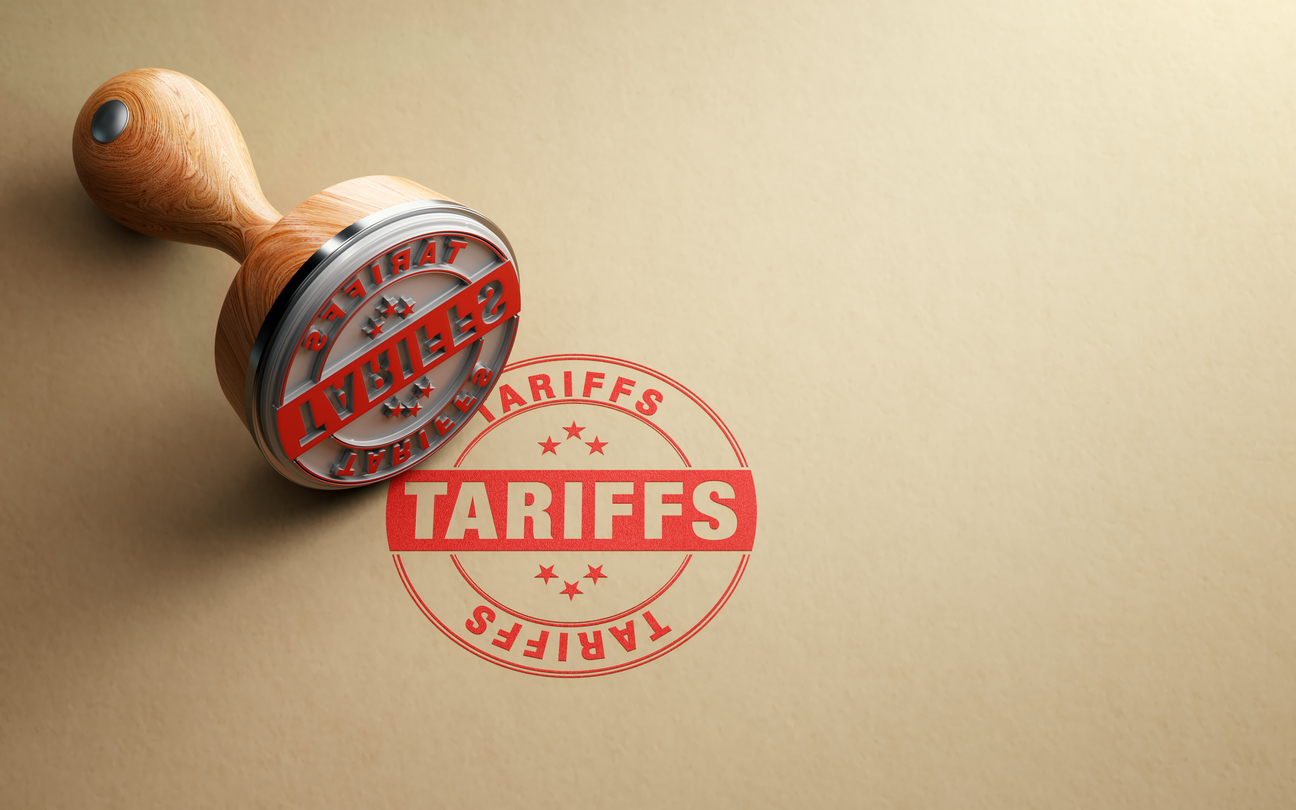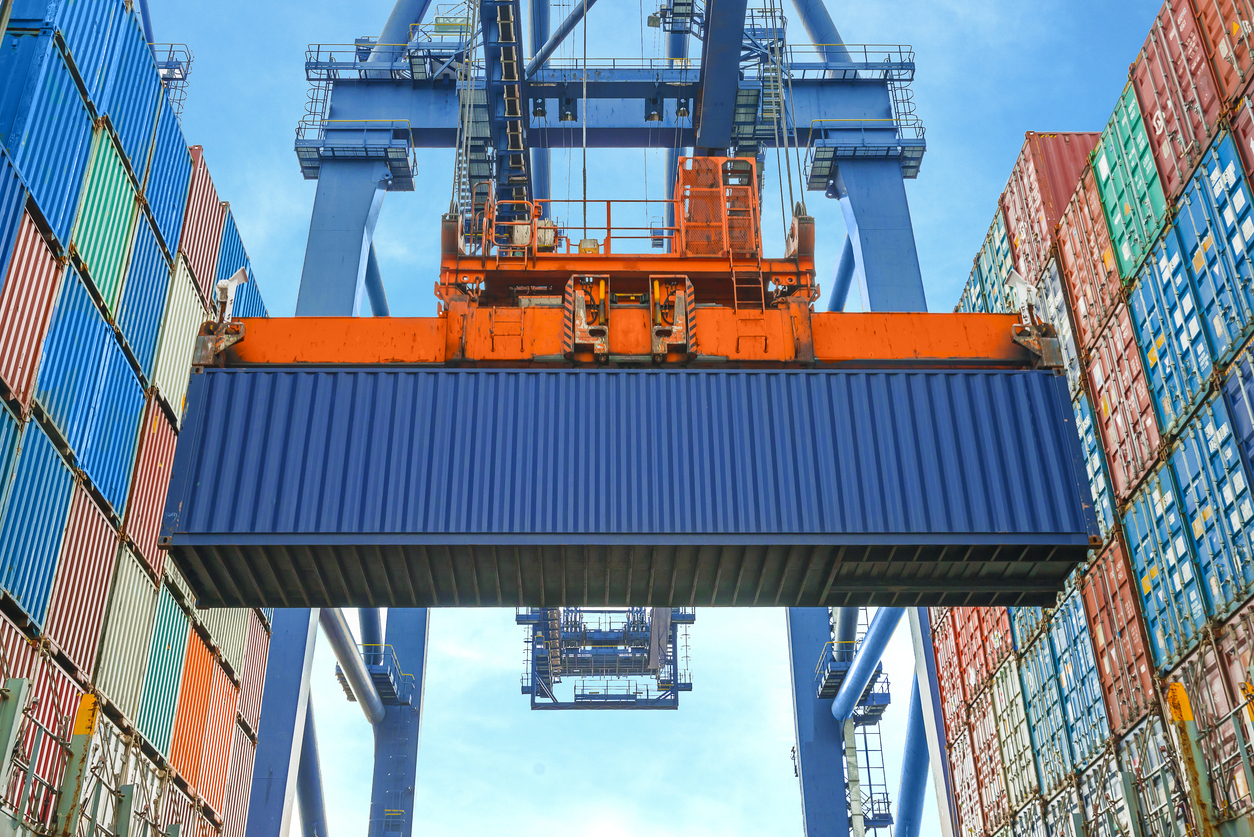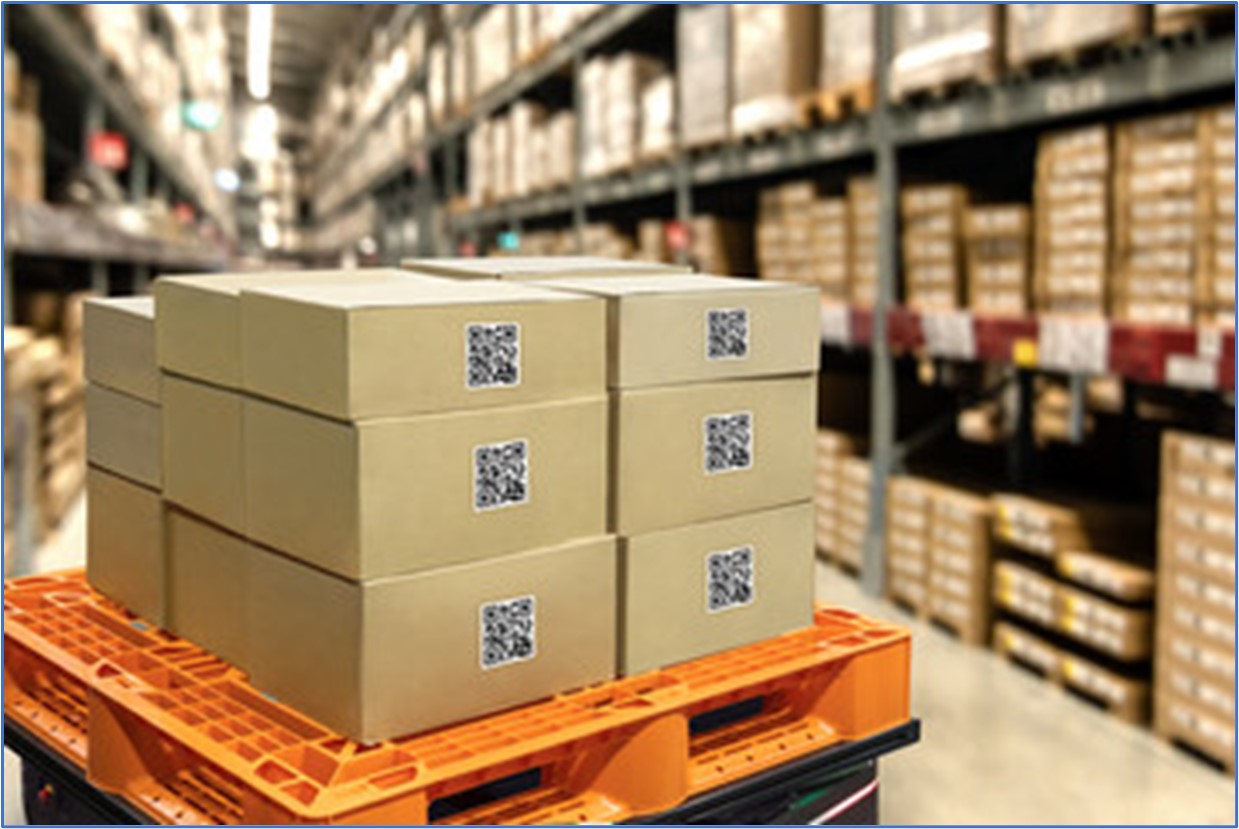-
How Supply Chains Can Adjust to New Tariffs

Global Tariffs In the constantly shifting landscape of global trade, businesses are once again being tested by the resurgence of tariffs. With new policies affecting imports and exports across key markets—including the U.S. and China—supply chain leaders must move quickly to assess the impact and adapt their operations. Tariffs, while often imposed for strategic or political reasons, directly affect the cost of goods, the viability of certain supplier relationships, and ultimately, the bottom line. But while these challenges can be significant, they also present opportunities for smarter, more agile supply chain strategies.
Evaluating Tariff Exposure and Operational Risk
The first step in adapting to new tariffs is understanding where and how they will affect your business. Companies must dig deep into their supply chains to identify which components, materials, or finished goods are at risk of increased duties. This includes reviewing Harmonized Tariff Schedule (HTS) codes, validating country-of-origin data, and cross-checking trade classifications for accuracy.
In doing so, organizations can quantify their exposure and prioritize which products or sourcing strategies require immediate attention. A thorough analysis of import and export data, in combination with cost modeling tools, can highlight potential financial impacts—both direct and indirect.
Rethinking Sourcing and Supplier Diversification
For many, the answer to rising tariff costs lies in diversification. Relying on a single country or supplier can leave companies vulnerable not only to tariffs but also to broader geopolitical shifts. A diversified supply base provides flexibility—allowing businesses to shift sourcing strategies quickly in response to policy changes, economic instability, or natural disruptions.
This may mean qualifying secondary suppliers in countries not subject to new duties or exploring nearshoring opportunities to reduce exposure to long-distance trade risks. While diversification can require upfront investment in supplier vetting and logistics planning, the long-term benefit is a more resilient and adaptable supply chain.
Leveraging Free Trade Zones and Bonded Warehousing
Another effective strategy for mitigating tariff impacts is leveraging duty deferral programs, such as foreign trade zones (FTZs) and bonded warehouses. These solutions allow goods to be stored, assembled, or even manufactured in special zones without triggering immediate tariff costs. Duties are only paid when the goods enter the domestic market—or in some cases, are avoided entirely if goods are re-exported.
FTZs can also help streamline customs procedures and reduce paperwork, enabling companies to operate more efficiently while managing financial exposure. This is particularly useful for companies operating global distribution models or manufacturing in multiple regions.
Building Visibility Across the Supply Chain
Visibility is a critical enabler for any supply chain strategy—but even more so in an environment with fluctuating tariffs. Companies must have a clear, real-time view into their sourcing, production, and transportation networks in order to make proactive decisions. Without strong visibility, organizations may fail to respond quickly to tariff changes, miss opportunities to reroute shipments, or miscalculate inventory needs.
Advanced digital tools—such as supply chain control towers, integrated planning platforms, and collaborative supplier networks—help create the transparency needed to anticipate issues and take action before disruptions become costly delays.
Managing Inventory for Flexibility and Efficiency
Finally, companies should rethink their inventory strategies in light of tariff-related volatility. Carrying more buffer stock in key markets might offer some protection against import delays or cost spikes—but excessive inventory increases carrying costs and ties up working capital.
Balancing flexibility with efficiency requires a strategic approach. Scenario planning, demand forecasting, and real-time inventory monitoring can help companies identify the right levels of safety stock, as well as the most cost-effective locations for storing goods. Especially in industries with fast product cycles or tight margins, getting this balance right can make a major difference.
Conclusion: Building Smarter Supply Chains with the Right Partner
Adapting to new tariffs is not a one-size-fits-all challenge. It demands a tailored mix of strategic foresight, operational agility, and technical know-how. From reassessing global sourcing strategies to leveraging trade zones and improving end-to-end visibility, companies must be willing to evolve their supply chain strategies to stay competitive.
That’s where ModusLink can make a difference. With global reach, and deep operational expertise, ModusLink helps businesses navigate the complexities of trade regulations and build resilient, cost-effective supply chains. Whether you’re responding to new tariffs or preparing for the next market shift, ModusLink offers the tools and insights to turn disruption into opportunity.
Bibliography
OpenAI’S GPT-3 – Information was also provided by Op
Disclaimer:
Content is the opinion of ModusLink Corporation and is not intended to act as compliance or legal advice.
-
Navigating the Impact of Global Tariffs on Your Supply Chain

Wooden tariffs stamp is sitting on recycled paper background. Horizontal composition with selective focus and copy space. The global business environment is constantly evolving, with tariffs emerging as one of the most significant changes in recent years. Tariffs, taxes imposed on imported goods, have a major influence on global trade, affecting businesses of all sizes. While tariffs are intended to protect domestic industries and generate revenue for governments, they also present significant challenges for companies that rely on international supply chains. This article explores the impact of global tariffs on your supply chain and offers strategies for minimizing their effects.
The Rising Cost of Goods: How Tariffs Affect Your Bottom Line
One of the most immediate impacts of tariffs is the increase in the cost of goods. When tariffs are imposed on imported raw materials, components, or finished products, the cost naturally rises. Companies face three main options to deal with the higher costs:
- Absorb the cost, reducing profitability.
- Pass the cost on to customers, which can affect pricing strategies and customer loyalty.
- Find alternate supply sources for the material and goods that are outside the affected tariffs.
This pressure on profit margins underscores the need for businesses to fully understand the financial impact of tariffs and take steps to minimize their burden. Carefully assessing how tariffs affect your cost structure is crucial for maintaining profitability and managing expenses effectively.
Key Takeaways:
- Tariff Impositions and Rollbacks: Changes to U.S. tariffs on key imports and exports could impact manufacturing costs. Companies that rely on raw materials, auto parts, and industrial components from Canada, Mexico, and China may experience price fluctuations.
- Trade Agreement Pressures: Although the United States-Mexico-Canada Agreement (USMCA) governs trade, ongoing tariff activity raises concerns about long-term stability. Some industries may seek exemptions, while others may face increased compliance requirements.
- Market Reaction and Business Uncertainty: Currency fluctuations, investor sentiment, and shifting trade flows may cause short-term disruptions in supply chain operations. Businesses that operate with just-in-time (JIT) inventory models are especially vulnerable to delays resulting from policy changes.
Disruptions in Sourcing and Delivery: Tariffs Cause Delays
Beyond cost increases, tariffs can also disrupt the timing of shipments and deliveries. Here are some ways tariffs can lead to delays:
- Customs Processing Delays: Additional documentation requirements can lengthen processing times at customs.
- Supply Chain Bottlenecks: Stricter customs inspections can delay shipments, disrupting inventory management.
- Inventory Shortages: Tariff-induced delays can lead to stockouts, making it difficult to meet customer demand.
Given today’s competitive market, meeting customer expectations for fast delivery is essential. Tariff-related delays can undermine customer satisfaction and damage your business reputation.
Mitigation Strategies: How to Reduce the Impact of Global Tariffs
To mitigate the challenges posed by tariffs, businesses can adopt several strategies to protect their supply chain operations:
- Diversify Your Supplier Base
Sourcing from countries with lower tariffs or favorable trade agreements can reduce the impact of tariffs. Exploring alternative suppliers in regions with lower or no tariffs minimizes costs and reduces exposure to tariff hikes. - Leverage Free Trade Zones & Tariff Classifications
Free trade zones (FTZs) provide a way to import goods without incurring tariffs, and sometimes with reduced duties. Additionally, understanding tariff classifications can help businesses lower duties on certain products, leading to cost savings. - Optimize Inventory and Demand Management
Proactive inventory management is crucial in the face of tariff-induced delays. Accurate demand forecasting and strategic inventory planning ensure businesses avoid stockouts and can capitalize on bulk purchasing before tariff increases take effect. - Collaborate with a Trusted Supply Chain Partner
Partnering with a trusted supply chain partner like ModusLink can help mitigate the impact of tariffs. ModusLink provides a global distribution network, technology, and automation that enhance real-time visibility, helping businesses forecast demand and manage their supply chains more efficiently.
Conclusion: Stay Ahead of Global Tariffs with Strategic Planning
Global tariffs present an ongoing challenge, but with strategic planning, businesses can successfully navigate these complexities. Understanding the impact of tariffs, diversifying suppliers, leveraging free trade zones, and collaborating with trusted partners are key steps in mitigating their effects. While ModusLink is not a tariffs expert, we are a supply chain services provider with 30 years of experience in helping businesses optimize their logistics and operations. By partnering with us, you gain access to our well-established logistics network, which can help you navigate tariff challenges by offering access to regions with favorable tariff conditions. With the right strategies in place, your business can remain adaptable, resilient, and positioned to thrive in an increasingly competitive global marketplace.
Bibliography
https://www.e2open.com/blog/trump-tariff-shifts-what-supply-c
OpenAI’S GPT-3 – Information was also provided by Op
Disclaimer:
Content is the opinion of ModusLink Corporation and is not intended to act as compliance or legal advice.
-
Building Resilient and Agile Supply Chains: Key Strategies for Success

Supply Chain Management – SCM – The Coordinated Process of Producing and Delivering Goods and Services from Suppliers to Consumers – Conceptual Illustration In today’s rapidly evolving global marketplace, supply chain disruptions have become a regular occurrence. Factors such as geopolitical shifts, extreme weather events, raw material shortages, and infrastructure challenges can significantly impact operations. For businesses to remain competitive, they must not only respond to these disruptions but proactively build resilient and agile supply chains that can handle unforeseen changes.
A data-driven, holistic approach is essential to ensure that organizations stay agile, cost-effective, and resilient during times of uncertainty. In this blog, we’ll explore key strategies to enhance supply chain resilience and highlight how services like those offered by ModusLink can help businesses navigate these challenges effectively.
1. Effective Demand Planning and Forecasting
Accurate demand forecasting is the cornerstone of a resilient supply chain. By leveraging data analytics, businesses can better anticipate customer demand, optimize production schedules, and avoid both stockouts and overstocking. Predictive analytics tools can help identify shifts in consumer behavior, allowing businesses to respond proactively instead of reactively.
Effective demand planning also optimizes inventory levels, reducing costs associated with storage and carrying inventory. Companies that leverage tools like ModusLink’s demand forecasting solutions can gain real-time insights into market trends, enhancing their ability to meet customer demands efficiently.
2. Strong Supplier Relationships
The foundation of any successful supply chain lies in robust supplier relationships. Strong supplier partnerships lead to better collaboration, faster response times, and improved risk management. By building trust and establishing long-term agreements, businesses can benefit from greater flexibility, faster adjustments, and access to cost-saving opportunities.
ModusLink offers supply chain services that integrate supplier collaboration, enhancing visibility and supporting faster and more efficient decision-making. Their platform facilitates communication across various stages of the supply chain, helping to identify and resolve disruptions.
3. Inventory Optimization
Balancing inventory levels is crucial for maintaining an efficient supply chain. Too much inventory ties up capital and incurs unnecessary storage costs, while too little can lead to missed sales opportunities and frustrated customers. By optimizing inventory levels, businesses can reduce costs, improve cash flow, and ensure consistent product availability.
ModusLink’s inventory management solutions help businesses streamline this process. With advanced analytics and automation, ModusLink enables companies to balance their inventory to meet demand while reducing the risk of stockouts or excess inventory. This approach not only improves operational efficiency but also enhances customer satisfaction through reliable product availability.
4. Logistics Efficiency
Logistics plays a critical role in ensuring that products reach customers quickly and reliably. Efficient logistics operations reduce lead times, cut transportation costs, and improve customer satisfaction. Real-time tracking and route optimization are essential tools for enhancing delivery efficiency and managing costs.
With ModusLink’s logistics services, companies can optimize their distribution networks, track shipments in real time, and reduce operational costs. Their expertise in managing complex logistics systems ensures that goods are delivered on time, regardless of disruptions. Additionally, ModusLink’s global network helps businesses scale and reach international markets with ease.
5. Agility and Flexibility
One of the key characteristics of resilient supply chains is their ability to quickly adapt to changes in demand, disruptions, or new market opportunities. Achieving agility requires a flexible supply chain with diversified sourcing, scalable manufacturing, and adaptive logistics strategies.
ModusLink supports this agility by offering customizable supply chain solutions that allow businesses to scale operations quickly. Whether you need to ramp up production or pivot to a new sourcing model, ModusLink’s flexible infrastructure ensures that your business remains adaptable and responsive to changes in the market.
6. Risk Management and Resilience
Effective risk management is essential for building a resilient supply chain. Identifying and addressing potential risks—whether they involve suppliers, geopolitical instability, or natural disasters—is key to minimizing disruptions and ensuring business continuity. Proactive strategies such as multi-sourcing, maintaining safety stock, and developing contingency plans help businesses prepare for and manage unforeseen challenges.
ModusLink supports businesses in navigating these risks by providing comprehensive supply chain solutions that prioritize risk mitigation. With their global network and expertise, companies can better anticipate disruptions and implement strategies to minimize the impact of unforeseen events, helping to maintain continuity even during times of uncertainty.
7. Technology Integration
Incorporating advanced technologies into supply chain operations can significantly improve transparency, efficiency, and decision-making. Technologies such as cloud-based platforms, enterprise resource planning (ERP) systems, and automation solutions are key tools that help optimize supply chain performance.
Cloud-based platforms enable real-time data sharing and improve coordination between stakeholders, including suppliers, manufacturers, and distributors. Enterprise Resource Planning (ERP) systems provide an integrated solution for managing essential business processes such as inventory, procurement, production, and order fulfillment. By centralizing data and operations, ERP systems streamline workflows, reduce manual errors, and increase operational efficiency across the supply chain.
Automation technologies, whether in warehousing, inventory management, or order fulfillment, are transforming the way businesses operate. Automation helps reduce human error, accelerates processes, and ensures accuracy in inventory and order tracking. As a result, businesses can achieve faster, more reliable delivery times, leading to improved customer satisfaction.
ModusLink integrates these advanced technologies into supply chain operations, providing businesses with the tools to enhance visibility, improve efficiency, and streamline coordination. By leveraging these technologies, companies can stay agile and better prepared to respond to disruptions, ensuring smoother and more resilient operations.
8. Sustainability and ESG Integration
As consumer demand for eco-friendly and socially responsible products increases, businesses must prioritize sustainability within their supply chains. Sustainable practices—such as reducing emissions, minimizing waste, and sourcing ethically—are essential for building a resilient and future-proof supply chain.
ModusLink’s sustainability initiatives help businesses implement green practices throughout their supply chains. From optimizing packaging to reducing carbon emissions in transportation, ModusLink’s services align with the growing demand for responsible business practices, helping companies meet Environmental, Social, and Governance (ESG) goals while enhancing brand reputation.
Conclusion
Building a resilient and agile supply chain requires a strategic combination of effective demand planning, strong supplier relationships, optimized inventory, efficient logistics, and advanced technology. Services like those offered by ModusLink provide businesses with the tools they need to enhance visibility, streamline operations, and mitigate risks. Whether it’s improving collaboration with suppliers, optimizing inventory management, or embracing digital transformation, a holistic approach to supply chain management ensures that businesses are ready to thrive in today’s fast-changing landscape.
By implementing these strategies and leveraging the right tools, businesses can turn their supply chain into a competitive advantage—ensuring long-term growth and success. To learn more about how ModusLink’s solutions can help you build a more resilient and efficient supply chain, visit their website or explore their range of services.
This expanded approach, supported by ModusLink’s expertise, enables organizations to create a supply chain that is not only cost-effective but also adaptable, sustainable, and resilient in the face of global challenges.
Bibliography
https://www.ivalua.com/blog/top-supply-chain-strategies
OpenAI’S GPT-3 – Information was also provided by Op
Disclaimer:
Content is the opinion of ModusLink Corporation and is not intended to act as compliance or legal advice.
-
Navigating Peak Season in the Supply Chain

Christmas Background Navigating Peak Season in the Supply Chain
As the festive season approaches, it’s essential to shift focus from the personal impact of Christmas to the professional pressures it imposes on industries. For many businesses, this time of year is marked by the busiest and most challenging operational period. Peak season brings unique pressures on supply chain management, from forecasting demand to ensuring timely deliveries. Here’s a detailed breakdown of how peak seasons like Christmas shape the supply chain and tips for staying prepared:
Key Challenges and Considerations
1. Increased Demand and Stock Challenges
During peak seasons, businesses experience a phenomenon called a “demand surge,” characterized by heightened consumer demand. Balancing stock levels is critical—overstocking can lead to excess inventory costs, while understocking risks losing sales. Accurate demand forecasting becomes paramount to striking this balance.2. Capacity Constraints in Warehousing and Transportation
Warehousing capacities are often pushed to their limits. Businesses may need to secure temporary storage solutions, leading to higher costs. Similarly, transportation networks face increased strain due to higher shipping volumes, which can result in delays and rising freight costs.3. Supply Chain Bottlenecks and Longer Lead Times
Suppliers often struggle to fulfill increased orders during peak demand periods, creating bottlenecks that ripple through the entire supply chain. Cross-border shipments may also experience delays due to port congestion. Working closely with suppliers to understand lead times and plan proactively is essential.4. Higher Operational and Labor Costs
Labor demand spikes during the holiday season, increasing costs for warehouse staff, drivers, and retail workers. Seasonal hiring becomes necessary, further inflating operational budgets. Regular staff often work overtime, impacting both costs and morale.5. Focus on Demand Forecasting and Inventory Management
Advanced analytics and predictive tools are instrumental in anticipating demand spikes. Adjusting safety stock levels and improving inventory visibility can mitigate risks, but require strategic planning to avoid waste or shortages.6. Risks to Customer Service and Satisfaction
Delayed deliveries during peak seasons can lead to dissatisfied customers. Additionally, higher sales volumes often result in increased returns, stressing reverse logistics systems. Robust customer service strategies are vital to managing expectations and resolving issues promptly.7. Supplier and Retailer Collaboration
Peak season success hinges on effective collaboration across the supply chain. Sharing demand forecasts, coordinating inventory, and aligning shipping schedules ensure a seamless flow of goods. Proactive communication with suppliers can help address capacity limitations and avoid disruptions.
Strategies for Managing the Peak Season
Navigating the peak season, especially during Christmas, demands a blend of preparation, agility, and technology. Leveraging the right resources and partnerships, such as ModusLink supply chain services, can provide a significant edge:
- Prioritize Workforce Support: High morale and clear communication keep teams motivated during stressful periods. ModusLink’s workforce solutions ensure businesses are equipped with the right staffing levels, including seasonal workforce management, to meet increased demand while maintaining employee well-being.
- Enhance Supplier Relationships: Strengthened collaboration ensures alignment on production and logistics. ModusLink’s expertise in supplier and inventory management helps businesses maintain seamless operations through proactive planning and real-time communication with key partners.
- Optimize Fulfillment and Logistics: Peak seasons often strain last-mile delivery systems and warehousing capacities. ModusLink provides scalable fulfillment services, flexible warehousing solutions, and robust reverse logistics systems to ensure customer satisfaction even during high-pressure times.
By addressing these challenges strategically with the support of ModusLink’s supply chain services, businesses can transform seasonal pressures into opportunities for growth and success. With proactive planning and collaboration, the festive spirit can thrive alongside operational excellenceressures into opportunities for growth and success, maintaining the festive spirit throughout.
Bibliography
- Institute of Supply Chain Management (IoSCM). “Christmas in the Supply Chain: Navigating Peak Season.” IoSCM Blog. Accessed December 2024. https://www.ioscm.com/blog/christmas-in-the-supply-chain-navigating-peak-season/
- Chopra, Sunil, and Peter Meindl. Supply Chain Management: Strategy, Planning, and Operation. Pearson Education, 2022.
- Christopher, Martin. Logistics and Supply Chain Management. FT Press, 2020.
- Slack, Nigel, et al. Operations and Process Management: Principles and Practice for Strategic Impact. Pearson Education, 2021
OpenAI’S GPT-3 – Information was also provided by OpenAI’S GPT-3 language model.
Disclaimer:
Content is the opinion of ModusLink Corporation and is not intended to act as compliance or legal advice.
-
The Five Stages of Reverse Logistics

Boxes in a Warehouse, reverse logistics stages. Reverse logistics, the process of managing product returns, repairs, recycling, and disposal, is crucial for organizations aiming to maximize efficiency and reduce environmental impact. By focusing on the key stages of reverse logistics, companies can minimize waste, control costs, and support sustainability. Here’s a breakdown of the five essential stages of reverse logistics:
1. Initiating the Return Process
When customers initiate a return, the organization’s return process begins. A structured approach to managing returns is essential to keep operations smooth. This includes outlining each step that a returned item will go through, from customer notification to processing within the organization. A well-defined returns process helps minimize unnecessary transportation, which can reduce both costs and carbon emissions. For companies handling a high volume of returns, like Amazon, categorizing the reason for each return allows for faster processing and ensures the product is correctly routed.
2. Categorizing the Return
Once a product is returned, it needs to be inspected to determine its next steps. Will it be refurbished, recycled, resold, or discarded? Efficient reverse-logistics processes involve clear systems to categorize returns as soon as they are received. Knowing the reason for a return in advance enables prompt decision-making and minimizes delays. By identifying the correct category quickly, organizations can reduce the time and resources spent handling the returned product and ensure it follows the correct path toward resolution.
3. Moving Products to Minimize Waste
For effective reverse logistics, it’s essential to keep returned items in continuous motion. Items requiring repairs should be promptly sent to the repair department, while those marked for disposal or resale should be moved to the appropriate area. Allowing products to sit idle leads to waste and inefficiency, while fast-tracking their journey through the logistics chain minimizes both. This stage helps organizations avoid the buildup of returned items, ensuring each product’s value is either reclaimed or responsibly redirected.
4. Repairing and Reintegration
Products marked for repair should be handled swiftly to avoid backlogs. Quick repairs allow items to be reintegrated into the organization’s inventory, or, if they cannot be repaired, they can be dismantled, with usable parts sold to manufacturers. This approach extends the lifecycle of a product by allowing functional components to re-enter the supply chain, reducing the need for new raw materials.
5. Recycling or Disposal
If an item cannot be repaired, resold, or parted out, it must be disposed of responsibly. Recycling is a critical aspect of this stage, as sustainable practices in reverse logistics mean handling non-usable items in an environmentally friendly way. Companies should prioritize disassembling products to recycle as many components as possible, which reduces waste in landfills and supports a circular economy.
The Goal: Sustainable Reverse Logistics
No matter the industry, optimizing reverse logistics yields significant benefits for both the business and the environment. The primary goal is to create a circular process that integrates manufacturing, distribution, shipping, repairs, and disposal seamlessly. This continuous flow not only reduces landfill waste but also cuts costs for organizations and customers alike. A comprehensive reverse-logistics strategy showcases a commitment to sustainability and creates added value by demonstrating to customers how returns and disposals are managed responsibly.
By prioritizing a robust reverse-logistics plan, companies can contribute to a sustainable future, achieving both economic and environmental goals while building trust with customers through responsible practices.
Conclusion: Partnering with ModusLink for Reverse Logistics Excellence
ModusLink is a leader in helping companies streamline their reverse logistics through a comprehensive suite of services that covers every step of the process—from managing returns and repairs to recycling and disposal. ModusLink’s solutions are designed to reduce environmental impact, optimize operational efficiency, and provide a seamless experience for both businesses and their customers. By leveraging ModusLink’s expertise in reverse logistics, companies can achieve a more sustainable, cost-effective supply chain, demonstrating their commitment to environmental stewardship and customer satisfaction.
Bibliography
https://www.ascm.org/topics/reverse-logistics-scramble-workarounds-ahead-threatened-us-port-strike-2024-09-25
OpenAI’S GPT-3 – Information was also provided by OpenAI’S GPT-3 language model.
Disclaimer:
Content is the opinion of ModusLink Corporation and is not intended to act as compliance or legal advice.
-
Shippers Rush to Find Alternatives as US East Coast Port Strike Looms

Shippers Rush to Find Alternatives as US East Coast Port Strike Looms LOS ANGELES/NEW YORK, Sept 25 (Reuters) – U.S. companies that rely on East and Gulf Coast seaports have been importing early, shifting goods to the West Coast, and even putting cargo on pricey flights to hedge against a threatened Oct. 1 strike that could jam supply chains and reignite inflation ahead of the U.S. presidential election.
As the threat of a potential strike looms over US East Coast ports, shippers across industries are scrambling to find workarounds to keep their supply chains moving. The possibility of disruptions at major ports like New York/New Jersey, Savannah, and Baltimore has businesses facing the real danger of shipment delays, inventory shortages, and cost increases. With time running out and no resolution in sight, contingency plans are quickly becoming a priority for supply chain managers.
The Stakes Are High
The US East Coast is home to some of the busiest and most critical ports in the country. These ports handle a significant portion of the nation’s containerized cargo, especially for the consumer goods, retail, and manufacturing sectors. A prolonged strike could paralyze inbound and outbound shipping, creating bottlenecks that ripple across the entire economy.
Recent labor disputes between port authorities and longshoremen’s unions have been ongoing, but the stakes have now escalated. The risk of a full-scale strike has increased uncertainty for shippers already dealing with lingering disruptions from the pandemic, rising fuel costs, and global geopolitical tensions.
Stranded Cargo, Soaring Rates
As of Saturday, there were 42 container ships scheduled to arrive at the Port of New York and New Jersey—one of the largest ports involved in the labor dispute—according to S&P Global’s maritime tracking service, Sea-web. Thirteen of the ships are scheduled to arrive after Sept. 30.
In August, the five largest ports on the East and Gulf Coasts processed about 24,766 40-foot containers of imports and exports, valued at $2.7 billion each day, according to John McCown, senior fellow at the Center for Maritime Strategy.
Incoming wine and auto parts from Europe are vulnerable. Rerouting those goods to the West Coast is challenging because it could require difficult-to-find transit through the Panama Canal, air freight, or other time-consuming or costly measures, logistics experts said.
Ports on the East and Gulf Coasts also handle roughly 75% of the bananas entering the United States, according to Jason Miller, interim chair of Michigan State University’s Department of Supply Chain Management. He added that it doesn’t make financial sense to reroute or fly in such low-value perishables.
The cost to send a 40-foot container from Shanghai to New York jumped to around $10,000 in July. Rates have since retreated but could spike again with a strike.
How Shippers Are Responding
In response, many shippers are scrambling to put alternative plans in place, hoping to minimize the potential fallout from a port shutdown. Here are some of the main strategies shippers are employing:
- Diversifying Entry Points: One of the most common responses is to divert shipments to other US ports, particularly those on the Gulf Coast and the West Coast. Ports in Houston, New Orleans, and Los Angeles are seeing an uptick in inquiries as businesses explore new entry points for their goods. While these alternatives can help, they also present new challenges, such as capacity limitations and potential congestion.
- Air Freight Options: For high-value or time-sensitive goods, many companies are turning to air freight as an emergency backup. While more costly, the speed of air cargo can help mitigate delays that might arise if a strike takes place. However, with capacity limited and demand rising, air freight may only be a viable option for specific types of cargo.
- Increasing Inventory Levels: Some companies are preemptively increasing inventory levels at domestic warehouses to buffer against potential delays. This strategy involves bringing in shipments ahead of schedule to avoid potential bottlenecks. However, it requires sufficient warehousing capacity and upfront capital to stockpile goods.
- Exploring Inland Transport Routes: Shippers are also exploring inland transport routes, particularly utilizing rail and truck networks to bypass the impacted ports. While this can alleviate some of the pressure, it can also lead to higher domestic shipping costs, especially if trucking capacity is already tight.
- Collaboration with 3PLs: Third-party logistics (3PL) providers have become invaluable in helping shippers quickly shift gears. Many companies are leveraging the expertise of 3PLs to coordinate alternative routing, warehousing, and last-mile delivery options in case the strike moves forward. Providers like ModusLink offer comprehensive supply chain solutions, including end-to-end logistics management, flexible warehousing, and real-time inventory tracking, allowing shippers to better manage disruptions and maintain business continuity. By partnering with 3PLs such as ModusLink, businesses can more easily adapt to unforeseen challenges while optimizing costs and efficiency.
Long-Term Impacts
Even if a last-minute agreement is reached and the strike is averted, the current uncertainty is a reminder of the vulnerability of global supply chains. Companies are being forced to reevaluate their logistics strategies, not only for short-term disruptions but also for long-term resiliency.
Some experts argue that the increased reliance on fewer, larger ports has left the supply chain more fragile. Moving forward, businesses may explore decentralizing their shipping routes and investing in smaller, regional ports or multi-modal transport solutions that offer more flexibility.
The potential strike is also another stark reminder of the labor challenges facing the logistics and supply chain industries. From truck driver shortages to warehouse staffing, the industry continues to face hurdles that could shape its future in the coming years.
Conclusion
For shippers, the looming East Coast port strike represents yet another critical challenge in an already volatile environment. While businesses are scrambling to put contingency plans in place, the long-term takeaway may be a reevaluation of how to build more resilient, adaptable supply chains that can better withstand disruptions. The next few weeks will be crucial, and whether or not a strike happens, the lessons learned will likely reshape the way goods move across the country for years to come.
If you’re a shipper affected by the potential strike, now is the time to consult with your logistics partners, evaluate alternative routes, and prepare for all possible outcomes. The road ahead may be uncertain, but proactive planning is key to navigating these turbulent times.
Bibliography
OpenAI’S GPT-3 – Information was also provided by OpenAI’S GPT-3 language model.
Disclaimer:
Content is the opinion of ModusLink Corporation and is not intended to act as compliance or legal advice.
-
Selecting a 3PL for Black Friday and Cyber Monday 2024

Selecting a 3PL for Black Friday and Cyber Monday 2024 2024 Holiday Spending Predictions –
Recent surveys reveal that 65% of holiday shoppers plan to spend about the same on gifts as they did last year. To ensure a seamless and successful Black Friday and Cyber Monday, selecting the right Third-Party Logistics (3PL) provider is crucial.
1. Scalability and Flexibility
Your 3PL must have the ability to scale operations up or down based on demand fluctuations during Black Friday and Cyber Monday. At ModusLink, we ensure scalability with flexible staffing solutions and adaptable warehouse operations that can handle sudden surges in order volumes without compromising speed or accuracy. Our seasonal adjustments are designed to meet the demands of high-demand periods, keeping your business running smoothly.
2. Kitting and Packaging
ModusLink offers kitting and packaging services to prepare high-demand items in advance, ensuring they’re ready to ship as soon as orders come in. By pre-packaging these items ahead of the holiday rush, you can streamline your fulfillment process and meet customer expectations for fast delivery. Additionally, ModusLink provides overflow warehousing options designed to accommodate the increased inventory typical of peak seasons. Our custom kitting services can also add a special touch to your offerings, such as including holiday bonus gifts with popular items, contributing to an exceptional customer experience that will stand out during this busy time of year.
3. Technology and Automation
Advanced technology and automation are key to handling the intense pressure of peak shopping days. ModusLink utilizes state-of-the-art warehouse management systems (WMS), order management systems (OMS), and cutting-edge automation tools. Our real-time inventory tracking, automated sorting, and packing processes, along with seamless integration with your e-commerce platforms, enhance efficiency and minimize errors, ensuring your operations are always ahead of the curve.
4. Experience and Expertise
Experience matters, especially when it comes to handling the unique challenges of Black Friday and Cyber Monday. ModusLink has a proven history of managing peak demand events for leading global brands, backed by more than 30 years of expertise in the logistics industry.
5. Cost-Effectiveness
While cost is always a consideration, it’s especially important during peak shopping days when margins can be tight. ModusLink offers competitive pricing without sacrificing quality or service. We work closely with you to develop a cost-effective strategy, discussing our fee structure and any potential additional costs that may arise during high-demand periods, such as expedited shipping or additional storage fees.
6. Returns Management
With increased sales come increased returns. ModusLink’s efficient returns management process is crucial for maintaining customer satisfaction and minimizing losses. Our robust reverse logistics system ensures that returns are processed quickly and efficiently, providing customers with a positive experience even after the initial purchase.
7. Geographic Reach and Network
Consider the geographic reach of your 3PL’s network. ModusLink’s global presence, with multiple strategically located fulfillment centers, helps reduce shipping times and costs, meeting the fast delivery expectations of your customers. Our extensive network and strong relationships with regional carriers also allow us to navigate the complexities of cross-border shipping with ease.
Conclusion
ModusLink’s supply chain services cover every aspect of your logistics needs, from inventory management to global distribution. By partnering with us, you can ensure that your business is fully prepared to meet the demands of Black Friday and Cyber Monday, guaranteeing a seamless and successful holiday season.
Bibliography
OpenAI’S GPT-3 – Information was also provided by OpenAI’S GPT-3 language model.
Disclaimer:
Content is the opinion of ModusLink Corporation and is not intended to act as compliance or legal advice.
-
Strategic Benefits of Outsourcing Warehouse Operations to a 3PL

Allowing a 3PL to Take Over Warehouse Responsibilities. More and more businesses have turned to outsourcing as a crucial lever to respond to increasing levels of market disruption, from remote working, talent retention, hyperinflation and business continuity. In industries like high-end electronic components and luxury goods manufacturing, businesses are constantly exploring ways to enhance efficiency, reduce costs, and remain competitive in an ever-changing demand cycle. One strategy that has gained significant traction is having a 3PL takeover warehouse responsibilities. This approach offers numerous benefits, enabling companies to focus on their core competencies while leveraging the expertise and resources of a 3PL provider. Let’s delve into the strategic advantages of allowing a 3PL to take over warehouse responsibilities.
Allowing a 3PL to Take Over Warehouse Responsibilities: Leveraging Expertise
- Focus on Core Competencies
Allowing a 3PL provider to take over warehouse responsibilities enables manufacturers to concentrate on their core competencies, such as product development, innovation, and market expansion. By offloading logistics operations, companies can allocate more resources and attention to areas that directly contribute to growth and technological advancements.
- Access to Advanced Technology
3PL providers often invest in the latest technology and infrastructure to stay competitive. Partnering with a 3PL gives manufacturers access to state-of-the-art systems for inventory management, order processing, and data analytics without the need for substantial capital investment. This ensures that businesses remain at the forefront of technological advancements in logistics.
- Scalability and Flexibility
3PL providers offer scalable solutions that can quickly adapt to fluctuating demand. Whether it’s a seasonal spike or rapid business growth, 3PLs have the resources and expertise to handle varying volumes efficiently. This flexibility ensures that electronics component manufacturers can maintain service quality and meet customer expectations regardless of demand changes.
- Cost Efficiency
Allowing a 3PL to take over warehouse operations can lead to significant cost savings by leveraging the economies of scale that 3PL providers offer. Shared resources, bulk shipping discounts, and optimized logistics networks reduce overall operational costs. Additionally, partnering with a 3PL eliminates the need for substantial capital investment in warehouse infrastructure and technology, allowing businesses to allocate capital more strategically.
- Risk Mitigation
3PL providers specialize in logistics and have the expertise to navigate complex supply chain challenges. By partnering with a reliable 3PL, manufacturers can mitigate risks related to regulatory compliance, labor management, and operational disruptions. This expertise ensures smoother operations and reduces the likelihood of costly errors.
- Improved Operational Efficiency
3PL providers have established processes and systems designed to optimize warehouse operations. This includes advanced technologies such as automation, robotics, and real-time data analytics. By allowing a 3PL to take over, manufacturers can benefit from these efficiencies, leading to faster order processing, reduced errors, and enhanced inventory management.
- Enhanced Customer Experience
In today’s customer-centric market, providing a superior customer experience is paramount. A 3PL provider can ensure faster and more reliable delivery times, accurate order fulfillment, and proactive communication with customers. By leveraging advanced technologies and data analytics, 3PLs can offer real-time tracking, personalized shipping options, and timely updates to customers. These enhancements not only improve customer satisfaction but also foster loyalty and encourage repeat business.
- Strategic Location Advantages
3PL providers often have a network of strategically located warehouses near key markets, transportation hubs, or suppliers. By allowing a 3PL to take over warehouse responsibilities, manufacturers can take advantage of these strategic locations, reducing transit times and transportation costs. Proximity to major markets also enables faster delivery times, enhancing customer satisfaction.
Conclusion
Allowing a 3PL provider to take over warehouse responsibilities offers strategic advantages that can significantly enhance the manufacturer’s supply chain efficiency and competitiveness. By giving up direct control and ownership of warehouse operations, businesses can focus on their core competencies, access advanced technology, and achieve greater scalability and flexibility.
For high-end electronic components and luxury goods manufacturers looking to optimize their logistics operations, partnering with ModusLink Corporation can be an excellent choice. ModusLink offers comprehensive logistics solutions, combining advanced technology, scalability, and expertise to manage your warehouse operations efficiently. By leveraging ModusLink’s capabilities, businesses can achieve enhanced efficiency, significant cost savings, and improved customer satisfaction, all while focusing on their core strengths.
In today’s competitive market, optimizing logistics operations is key to achieving long-term success. By allowing ModusLink to take over warehouse responsibilities, high-end electronic components and luxury goods manufacturers can ensure that their supply chain is agile, efficient, and ready to meet the demands of a rapidly changing business landscape.
Bibliography
OpenAI’S GPT-3 – Information was also provided by Op
Disclaimer:
Content is the opinion of ModusLink Corporation and is not intended to act as compliance or legal advice.
-
Mastering Demand-Driven Material Planning

Demand planning and data analysis concept. In the dynamic landscape of supply chain management, demand-driven material planning is a crucial strategy for optimizing operations and meeting customer demands efficiently. Let’s delve into the essentials of this approach and explore how businesses can successfully implement it with the expertise of ModusLink.
Understanding Demand-Driven Material Planning
Demand-driven material planning, often referred to as Demand-Driven Material Requirements Planning (DDMRP), is a strategic methodology that revolutionizes traditional supply chain practices. It combines elements of traditional MRP and lean principles to dynamically manage material requirements and inventory levels based on actual demand signals. The core of DDMRP lies in strategically positioning buffer stocks to enhance flow and reduce lead times, thus improving overall supply chain performance.
Key Strategies for Effective Demand-Driven Planning
- Accurate Demand Forecasting: Precise demand forecasting forms the foundation of demand-driven planning. ModusLink utilizes advanced analytics and historical data to develop accurate forecasts, ensuring the right quantity of packaging materials is available when needed.
- Flexible Inventory Management: Demand-driven planning emphasizes flexibility in inventory management. ModusLink’s solutions focus on maintaining optimal inventory levels, reducing excess stock, and minimizing holding costs through just-in-time practices.
- Supplier Collaboration: Collaborative partnerships with packaging material suppliers are vital. ModusLink fosters strong relationships to enable quick response times and flexible order quantities that align with demand fluctuations.
- Data-Driven Decision Making: Real-time data and analytics drive informed decision-making in demand-driven planning. ModusLink continuously monitors demand patterns, inventory levels, and supplier performance to optimize material planning strategies.
Implementing Demand-Driven Planning
Implementing demand-driven packaging material planning requires strategic partnerships with solution providers like ModusLink. Here’s how ModusLink’s expertise enhances demand-driven strategies:
- Advanced Analytics and Forecasting: ModusLink leverages advanced analytics to develop precise demand forecasts, ensuring optimal inventory levels and efficient resource allocation.
- Inventory Optimization: ModusLink’s inventory management solutions align inventory levels with demand, reducing holding costs and waste.
- Technology Integration: ModusLink integrates cutting-edge technologies such as IoT-enabled tracking and AI-driven analytics, providing real-time visibility into supply chain dynamics.
Benefits of Demand-Driven Planning
Implementing demand-driven material planning with ModusLink offers numerous advantages:
- Cost Savings: Reduced inventory holding costs and minimized waste due to accurate demand forecasts.
- Improved Customer Service: Ensuring packaging material availability aligns with customer demand, reducing delays and stockouts.
- Enhanced Agility: Quick adaptation to changing market conditions and demand patterns.
- Optimized Supply Chain: Streamlined processes and improved efficiency throughout the supply chain.
Conclusion
Demand-driven material planning is a strategic approach that optimizes inventory levels, reduces operational costs, and improves customer satisfaction. By embracing this methodology and partnering with solution providers like ModusLink, businesses can enhance their supply chain resilience and responsiveness. Emphasizing flexibility, data-driven insights, and collaborative relationships is key to succeeding in today’s competitive market environment.
Ready to Elevate Your Material Planning Strategy?
Contact ModusLink today to explore how demand-driven material planning can transform your supply chain and drive business growth. Embrace innovation with ModusLink and unlock the full potential of demand-driven material planning.
Bibliography
OpenAI’S GPT-3 – Information was also provided by OpenAI’S GPT-3 language model.
Disclaimer:
Content is the opinion of ModusLink Corporation and is not intended to act as compliance or legal advice.
-
Electronics Kitting and Assembly with 3PL Solutions

Engineer is Holding New HDD Hard Drive. Introduction:
In today’s interconnected world, businesses are seeking agile and cost-effective strategies to meet the demands of an ever-evolving market. By harnessing the capabilities of a global 3PL partner, companies can unlock new possibilities for efficiency, scalability, and innovation in their electronics assembly processes.
- Specialization & Expertise:
- While many companies offer 3PL services, it’s critical to choose a specialized 3PL provider like ModusLink with expertise in handling, storing, and kitting electronic components. Electronics components require specific training, facilities, and equipment due to their delicate nature and sensitivity to environmental factors.
- Consider the unique requirements of your manufacturing process. For high-volume manufacturers, proficiency in efficiently managing large quantities of the same components is essential. Conversely, high-mix manufacturers benefit from partnering with a 3PL specialized in navigating the complexities of handling a diverse range of components.
- Seek a 3PL provider like with a deep understanding of the electronics industry and its specific challenges. Their expertise in electronic component kitting and assembly can streamline your operations and ensure optimal efficiency.
- Additionally, assess the scalability and the demand variability of your business when selecting a 3PL partner. Some 3PLs impose minimum contract size requirements or often minimum / maximum volumes, which may not align with the uncertain needs of a growing business. Choose a partner like ModusLink who can be flexible in accommodating your current needs while also supporting your future growth trajectory.
- Global Reach, Local Expertise:
- Understanding the global footprint of 3PL providers and their local presence.
- Leveraging regional expertise to navigate regulatory requirements and cultural nuances.
- Seamless coordination across borders for streamlined supply chain operations.
- Comprehensive Kitting Services:
- Tailored kitting solutions to meet the unique needs of electronics manufacturers.
- End-to-end management of component procurement, inventory management, and JIT delivery.
- Dynamic inventory optimization to minimize lead times and reduce costs.
- Advanced Assembly Capabilities:
- Access to cutting-edge assembly facilities equipped with state-of-the-art technology.
- Skilled workforce trained in the latest assembly techniques and quality standards.
- Scalable production capacity to accommodate fluctuations in demand.
- Quality Assurance Across Borders:
- Stringent quality control protocols enforced throughout the global supply chain.
- Compliance with international quality standards and regulatory requirements.
- Continuous improvement initiatives driven by data analytics and feedback mechanisms.
- Supply Chain Visibility and Transparency:
- Real-time tracking of components and assemblies across multiple geographies.
- Transparent communication channels for enhanced collaboration and decision-making.
- Predictive analytics to anticipate supply chain disruptions and mitigate risks.
- Cost Efficiency and Value Optimization:
- Economies of scale realized through global procurement and resource pooling.
- Transparent pricing models tailored to meet the budgetary constraints of clients.
- Cost-saving initiatives such as lean manufacturing and waste reduction strategies.
- Innovation and Technology Integration:
- Integration of emerging technologies such as IoT, AI, and robotics in assembly processes.
- Continuous investment in research and development to drive innovation and efficiency.
- Customized solutions leveraging digital platforms for enhanced visibility and control.
- Environmental Sustainability Initiatives:
- Commitment to sustainable practices and ethical sourcing throughout the supply chain.
- Reduction of carbon footprint through energy-efficient operations and green logistics.
- Collaboration with eco-friendly suppliers and adoption of recyclable packaging solutions.
- Case Studies and Success Stories:
- Real-world examples showcasing the transformative impact of global 3PL solutions, including ModusLink.
- Testimonials from satisfied clients highlighting the value proposition of outsourcing assembly operations.
Conclusion:
In an era of rapid globalization and technological advancement, partnering with a global 3PL provider like ModusLink offers unparalleled opportunities for electronics manufacturers to stay ahead of the curve. By leveraging ModusLink’s over 30 years of extensive network and expertise, businesses can optimize their supply chain, drive innovation, and achieve sustainable growth in the dynamic landscape of electronics manufacturing. Embrace the future of assembly with ModusLink and unlock a world of possibilities for your business
Bibliography
OpenAI’S GPT-3
Information was also provided by OpenAI’S GPT-3 language model.
Disclaimer:
Content is the opinion of ModusLink Corporation and is not intended to act as compliance or legal advice.
- Specialization & Expertise: